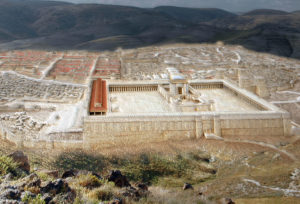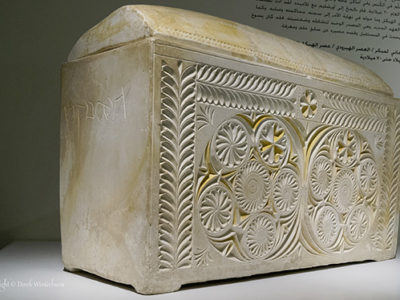EVEN IF THE BIBLE is not a history book, as many Christians insist, it does have some reliable history.
In this week’s Friday Fun Facts, I should probably tell you a little about that, since in my last two blog posts I reported why some Christians say they don’t have a lot of confidence in the historical accuracy of the Bible.
It struck me odd yesterday, as I was thumbing through my most recent issue of Biblical Archaeology Review, that I came across an article titled “Archaeology confirms 50 real people in the Bible.” It’s written by Lawrence Mykytiuk, a history prof at Purdue University.
I didn’t realize there were that many of them. History profs are good to have around, for perspective.
One of the most recent discoveries related to the Bible is about one of the stars: King David.
About 20 years ago some Bible experts were saying David was a figment of someone’s imagination – an ancient version of King Arthur. That changed in 1993 when archaeologists uncovered a piece of stone inscribed with a foreign king’s brag about defeating the “king of Israel,” and the “House of David.” The inscription dates to about 200 years after David.
Many of the famous souls who made the prof’s list of the Real Fifty are well-known stars of Middle Eastern history – and Hollywood movies.
Iraqi-based rulers such as Nebuchadnezzar, Sennacherib, and Sargon.
Iran-based rulers such as Xerxes, Darius, and Cyrus.
Those people are givens. We expect them to be real. But without supporting documents, we might not be so sure about some of the lesser-known Jews of the Bible.
Here are a few Bible people who have also turned up in ancient documents.
Kings of the northern Jewish nation of Israel:
- Omri, 1 Kings 16:16
- Ahab, 1 Kings 16:28
- Jehu, 1 Kings 19:16
Kings of the southern Jewish nation of Judah:
- Ahaz, 2 Kings 15:38
- Hezekiah, 2 Kings 16:20
- Manasseh, 2 Kings 20:21
Bad boy Kings of neighboring nations:
- Mesha, 2 Kings 3:4
- Hazael, 1 Kings 19:15
- Ben-hadad, 2 Kings 13:3
I was a bit surprised that the list didn’t include the scribe of Jeremiah: “Baruch son of Neriah” (Jeremiah 36:4).
We may actually have Baruch’s thumbprint. A partial print shows up on a plug of clay that seems to have been pressed with Baruch’s personal seal. Scribes sealed letters and scrolls with a plug of clay or wax imprinted with their name or identifying mark. You had to break the plug to open the letter.
One clay seal found in 1975 among a stash of 250 seems to display the full, formal name of Baruch and his father: “Belonging to Berekyahu son of Neriyahu the scribe.”
Some Bible experts say the seal is a forgery. Others say it’s for real and the critics should deal with it.
Another notable who didn’t make the list was the high priest who orchestrated the execution of Jesus: Caiaphas. Ironically enough, archaeologists seem to have found his coffin.
It’s actually a bone box, made of stone. Excavators discovered it in 1990 in Jerusalem when they dug into what they discovered was an ancient cemetery.
The stone box held the bones of a man about 60 years old along with bones of one woman and four children.
Etched into the side of the ornately decorated stone box is the name “Joseph’s son of Caiaphas.” First-century Jewish historian, Josephus, identified Caiaphas that way – as the high priest “Joseph, who was called Caiaphas.”
I guess the point is this: even if folks argue that the Bible is not a history book, it’s probably a good idea for them to acknowledge reliable history when it drops on their toe.





Jeff and I subscribe to BAR. We fight over who gets to read it first! I notice in that particular article in BAR, that only OT characters are referred to. There are several NT characters that could have been mentioned as well, not the least of whom were Augustus and Tiberias, but I guess they’re so obvious, they go without saying…
Good catch, Debbie. I didn’t linger long enough with that article to notice that. Now I’m wondering how many more than 50 confirmed Bible characters there are. Good job catching that.